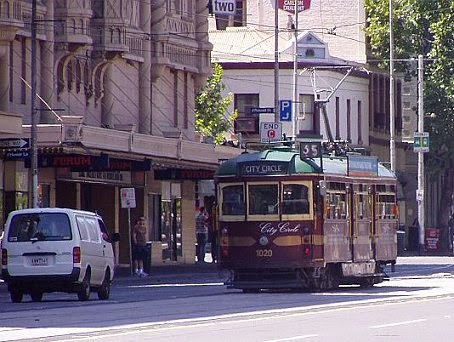Well there we were, hurtling north up the Hume Freeway,
when a road sign caught our eye.
A quick decision was made and we took the next exit and
checked into Glenrowan Tourist Park – a sleepy little caravan park set in
bushland.
 |
| Camped at Glenrowan Tourist Park |
Over the next couple of days we explored the area and were
entertained by the kangaroos and rabbits foraging in the nearby paddocks each
afternoon.
There is no getting away from the legend of Ned Kelly in
Glenrowan as this was the place where he was captured. Even if you knew nothing about Ned the
humongous statue of him in the main street should be a dead give-away. |
| Can't miss this in the main street of Glenrowan |
Glenrowan is a small country town with tourism its main
source of revenue. Anything and
everything ‘Ned’ can be obtained here and a museum depicts the siege at
Glenrowan where Ned was captured. A
reconstruction of Ned’s family home is also on display.
 |
| Replica of Ned Kelly's family home |
The following bit of information is a snapshot of the Ned
Kelly legend :-
Edward "Ned" Kelly (December 1854 – 11
November 1880) was an Australian bushranger of Irish descent. His legacy is controversial; some consider him
to be a murderous villain while others view him as a folk hero and Australia's
equivalent of Robin Hood.Ned Kelly was born in Australia in the town of Beveridge in the state of Victoria to an Irish convict father and an Irish-Australian mother. His father died after a six-month stint in prison for unlawful possession of a bullock hide when Ned was twelve. Following an incident at his family's home in 1878, police parties searched for Ned in the bush. After he, his brother Dan and two colleagues killed three policemen, the colonial government proclaimed Kelly and his gang ‘wanted outlaws’.
A final violent confrontation with police took place at Glenrowan on 28 June 1880. Ned, dressed in homemade plate metal armour and a helmet, was captured and sent to jail. He was convicted of three counts of willful murder and hanged at Old Melbourne Gaol in November 1880. His daring and notoriety made him an iconic figure in Australian history, folklore, literature, art and film.
For those of you who may want to know more about Ned Kelly
just go to the following website :-
At the siege site information boards describe the events
that took place and we wander along the trail leading from the site of the Inn
to where Ned was finally captured.
 |
| Site of the Glenrowan Inn where the siege took place - Mount Glenrowan in background |
 |
| 1880 photograph of burnt out remains of Glenrowan Inn |
 |
| Just loved this 'log' Ned Kelly depicting the place where he was captured |
 |
| Photograph of Ned Kelly taken one day before he was hanged |
The following day we took a drive to Mount Buffalo –
stopping off at Greta Cemetery where Ned Kelly (minus his head) and his mother lie
in unmarked graves. Ned was only
recently interred in the cemetery and a headstone has been erected by the Kelly
descendants in memory of Ned, his mother and other family members.
We can see Mount Buffalo from the caravan park but it is
a good couple of hours drive away.
 |
| Mount Buffalo |
Along the way we notice that many of the farms have kilns
– not in use. When we reached Myrtleford
we stopped at a picnic area where one of these kilns was on display and found
out that they were ‘Tobacco Kilns’.
 |
| Tobacco Kiln at Myrtleford |
There must have been a lot of tobacco being grown here in
the 1900’s as every farm we passed seemed to have anywhere up to several kilns
on their property. Obviously the bottom
must have fallen out of the tobacco market as we did not see one crop of
tobacco now being grown. Just past
Myrtleford we turn onto the road leading to Mount Buffalo National Park.
 |
| Driving up Mount Buffalo |
The road winds back and forth up the cliff faces for over
twenty kilometres with rugged granite outcrops dominating the landscape. As we traverse the terrain across the top we
can see the feature known as the ‘Horn’
 |
| The Horn (Mount Buffalo) |
and as we get closer we can see people standing at the
railing on the top.
 |
| The Horn (Mount Buffalo) |
At the car park on the western side of Mount Buffalo an
old shelter still stands
 |
| Wok at road's end - Mount Buffalo |
and a panoramic vista opens up.
 |
| View from the shelter - Mount Buffalo |
 |
| View the other way at the shelter - Mount Buffalo |
It always amazes us to see where some trees manage to
find a foothold and survive the elements.
 |
| Just love this tree growing between the granite boulders |
On the way back down the mountain the stark white
skeletons of trees caught in a devastating bushfire a decade ago catch our eye.
 |
| Bushfire devastated trees on Mount Buffalo |
We got back just in time for happy hour at the caravan
park with the rabbits and kangaroos.
Its stone fruit harvest time with lots of fruit being
sold at the farm gate – so we couldn’t drive past without taking full advantage
of cheap prices and tasty produce.
 |
| Wok is all set - computer to play with - apricots and cherries to munch on .. |
Hmmm - wonder
how many cherries one has to eat before a falling into a ‘cherry coma’ ... ?



















































